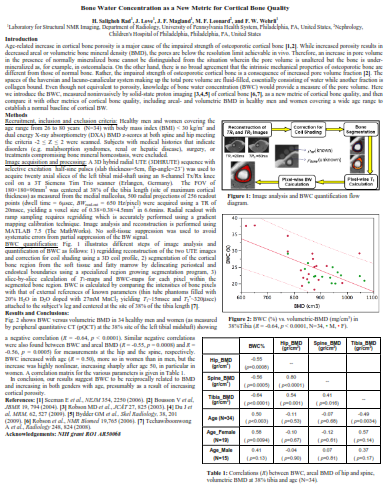Bone Water Concentration as a New Metric for Cortical Bone Quality
Abstract
Age-related increase in cortical bone porosity is a major cause of the impaired strength of osteoporotic cortical bone. While increased porosity results in decreased areal or volumetric bone mineral density (BMD), the pores are below the resolution limit achievable in vivo. Therefore, an increase in pore volume in the presence of normally mineralized bone cannot be distinguished from the situation wherein the pore volume is unaltered but the bone is undermineralized as, for example, in osteomalacia. On the other hand, there is no broad agreement that the intrinsic mechanical properties of osteoporotic bone are different from those of normal bone. Rather, the impaired strength of osteoporotic cortical bone is a consequence of increased pore volume fraction. The spaces of the haversian and lacuno-canalicular system making up the total pore volume are fluid-filled, essentially consisting of water while another fraction is collagen bound. Even though not equivalent to porosity, knowledge of bone water concentration (BWC) would provide a measure of the pore volume. Here we introduce the BWC, measured noninvasively by solid state proton imaging of cortical bone, as a new metric of cortical bone quality, and then compare it with other metrics of cortical bone quality, including areal- and volumetric BMD in healthy men and women covering a wide age range to establish a normal baseline of cortical BW.

